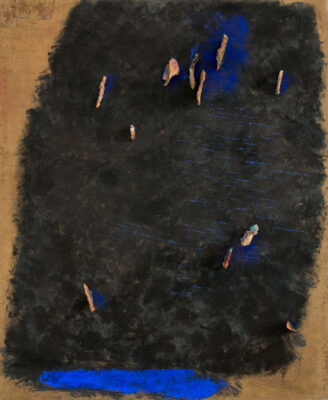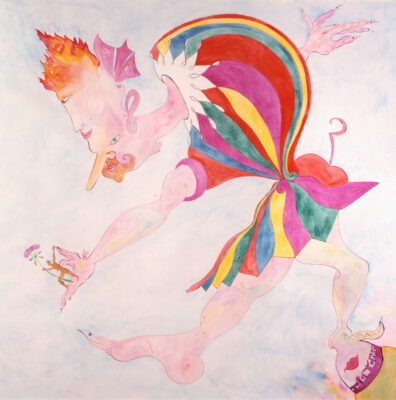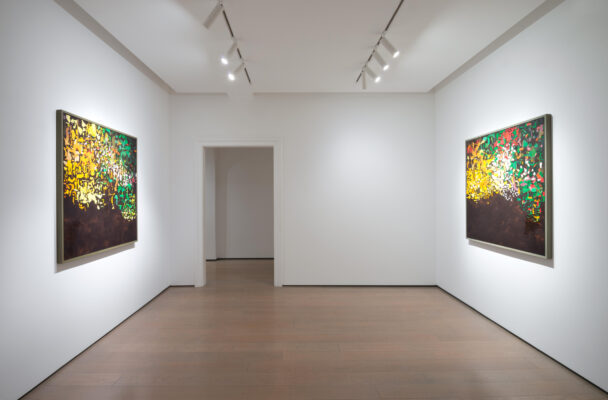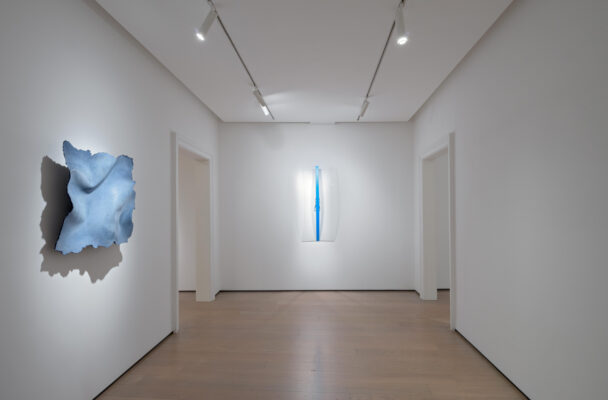20.05.2024 — 27.07.2024
Stanze
20.05.2024 - 27.07.2024Show introduction
The rooms of the Galleria dello Scudo now open up to a new display that presents, in succession, four authors chosen from among the contemporary artists who have been involved in direct collaboration with the gallery over the years, each documented in a personal section.
The succession, not necessarily subordinated to criteria of chronological order, offers the visitor an overview of very different personalities, reconfirming the vitality and multifaceted character of Italian art in recent decades, in which figurative and abstract instances coexist, as well as experiments with traditional materials and techniques, and also openings towards explorations that have not been equalled in the language of other authors.
Opening the exhibition is Luigi Ontani with a cycle of ten watercolours executed specifically for the Italian edition of the novel by Portuguese writer António Pedro, Appena un racconto, published in 1995 by Colpo di Fulmine Edizioni. Each of the ten works draws inspiration from a very precise passage in the book, retracing the narration of a story ‘as simple as plants’, and ‘born naturally like them, even if, like them, it sometimes takes unexpected forms’.
Alongside them it’s the large watercolour on paper Grillo gobbo discolo e goloso dated 1996, showcasing the artist's peculiar ironic vein, thanks to which Ontani stages actions taken from an imaginative universe, born between dream, fantasy and the invention of a new world where the most unthinkable actions intertwine and coexist.
Jackson Pollock, ‘the greatest living painter in the United States’ as he was defined in an article published in ‘Life’ in 1949, is the subject of the bust created in collaboration with the Bottega d'Arte Ceramica Gatti of Faenza, here depicted with the ever-present cigarette in his mouth, crowned by his cans of colour, the same ones that appear in numerous photographs taken by Arnold Newman in his studio at Springs in East Hampton. The drops of colour, inspired by his famous drippings, largely cover the figure, from the face to the twisted column supporting the torso, under the banner of that horror vacui peculiar to the pictorial language of the American artist. The work now exhibited reinterprets the subject tackled by Ontani in two ErmEstetiche of 1996.
Giuseppe Gallo's two paintings Il deserto del Gobi and Il deserto dei Tartari present a cascade of signs, symbols and forms, ready to illuminate the dark galaxy below, the lightless desert enlivened by the dense mosaic of shimmering presences.
‘The painting becomes the theatre of representation of an archaic belligerence between forces destined never to subside, between energies that can be evoked but never halted. This is why the artist uses a language between the organic and the figural, between the informal and a suggested figurativeness’ (A. Bonito Oliva). Gallo renews his reflections on the relationship between man and nature, in the awareness that ‘the nature of things has no rigidity of its own, but has in balance the dominant criterion of its creations’.
The Gallery chooses to present a recent work by Arcangelo Sassolino that renews its reflections on the forces of nature, the subject of constant and rigorous research, always aimed at probing the ultimate limit of resistance and non-return. Curved Time of 2022, a large sheet of curved glass placed under tension by a strip of fabric, demonstrates how the material, rigid and fragile par excellence, can actually bend and show itself malleable if subjected to skilfully calibrated forces. There is also one of his works in cement, created with the intention of combining the two-dimensional with the three-dimensional, painting with sculpture, bringing with it the memory of an immaculate surface, perfectly smooth and shiny, an expression at the same time of the resistance, fragility and finesse of a material that is part, even unconsciously, of our everyday life.
The homage to Marco Gastini, the Turin-based artist who passed away in 2018, includes two works that attest to the author's traditional interest in unusual materials and assemblages, in the context of an expressive research that has always hinged on criteria of compositional refinement. The large canvas Sale nel buio, executed in 2013, and Apnea of 2017, a work on paper of smaller dimensions, are both studded with terracotta inserts, rendered with iridescent mottling, which echo the hatching and drafting in Egyptian blue, inserted to enliven the dark surface of the painting with almost iridescent effects.
Artists
Born in the province of Cosenza in 1954, after completing scientific high school he frequented the faculty of Architecture. In Rome in 1976 Giuseppe Gallo held his first personal exhibition at the Galleria Ferro di Cavallo and in 1977 at La Stanza he presented "Giambellino". In this period he set up his studio in the former Cerere pasta factory in via degli Ausoni, destined to become the point of reference for an entire generation of artists.















